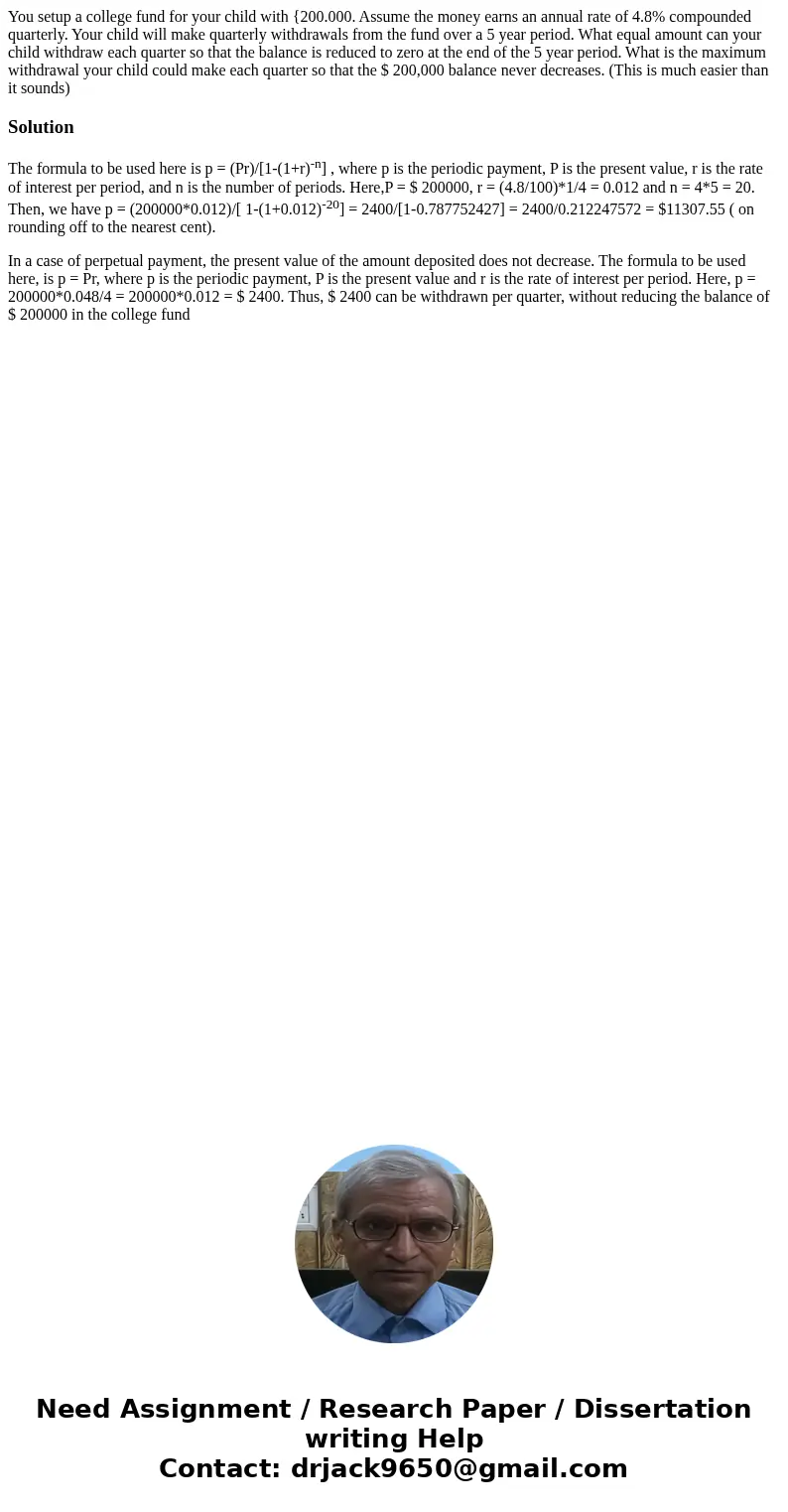You setup a college fund for your child with 200000 Assume t
Solution
The formula to be used here is p = (Pr)/[1-(1+r)-n] , where p is the periodic payment, P is the present value, r is the rate of interest per period, and n is the number of periods. Here,P = $ 200000, r = (4.8/100)*1/4 = 0.012 and n = 4*5 = 20. Then, we have p = (200000*0.012)/[ 1-(1+0.012)-20] = 2400/[1-0.787752427] = 2400/0.212247572 = $11307.55 ( on rounding off to the nearest cent).
In a case of perpetual payment, the present value of the amount deposited does not decrease. The formula to be used here, is p = Pr, where p is the periodic payment, P is the present value and r is the rate of interest per period. Here, p = 200000*0.048/4 = 200000*0.012 = $ 2400. Thus, $ 2400 can be withdrawn per quarter, without reducing the balance of $ 200000 in the college fund

 Homework Sourse
Homework Sourse